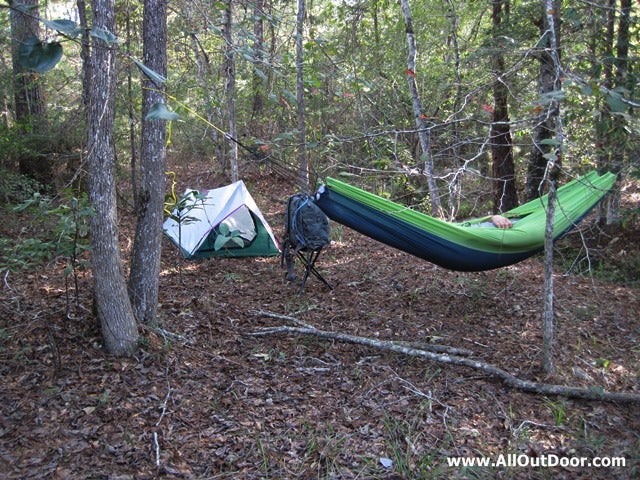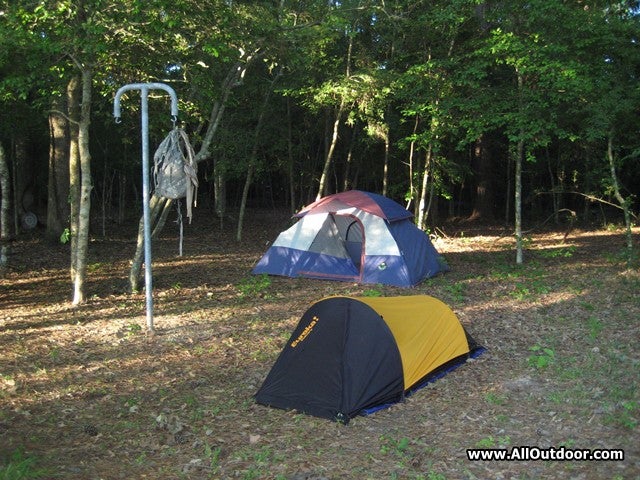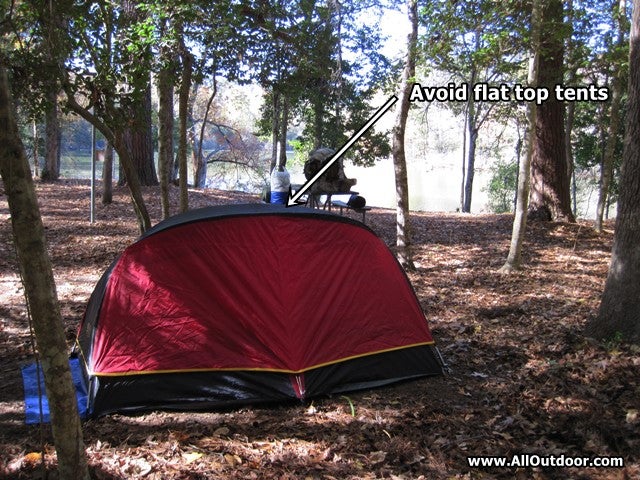How to Shop for a Tent
Kevin Felts 07.05.18

When shopping for a tent, what are some of the things the reader may want to look for?
Some people browse the local sporting goods store, or a site such as Amazon shopping for tents, find one they like, make the purchase, then discover that the tent does not perform as expected.
Let’s take a few minutes and talk about things to look for in a tent.
Tent Size
When shopping for a tent, how large does the tent need to be? Is this a tent which will be brought to a park, or a tent packed into a remote camping site on a river?
Too large and the tent becomes too big for the intended purpose; with size also comes weight.
Too small and people do not have enough individual space.
Will gear be kept inside the tent at night? For example, when camping in bogs or swamps, I like my backpack to be either suspended from a tree, or inside the tent. This is to keep various snakes, such as the cottonmouth and copperhead out of the backpacks.
When picking tent size, consider adding one person to the number of people who will be using the tent. Let;s say three people will be using the tent, then purchase a four person tent. The extra room can be used for people to spread out, or for storing gear.
Assembly
When it comes to putting the tent together, a lot has changed over the decades. Even as recent as the 1980s tents used aluminum poles which were heavy and bulky. Today’s tents use space age carbon fiber or fiberglass poles.
One of the big questions – “Does the tent need to be freestanding?” Freestanding means the tent can stand without guidelines or being staked down. Why does freestanding matter? People who camp in rocky areas and are unable to drive stakes in the ground probably need a freestanding tent.
Then there is the weather. In violent weather, tents that are not freestanding are more likely to collapse than free standing.
How much time is someone willing to spend putting up and taking down the tent? Will the tent be in one place for several days, or moved almost daily?
Rain Protection
Few things will spoil a camping trip like a leaking tent. Look for a tent with a rainfly designed so rainwater flows off quickly. Flat places on tent rain flies should be avoided.
A tent with a flat top does two things:
- Provides rain water a place to sit.
- Condensation inside the tent collects and drips back into the tent.
The rainfly should be designed in such a way that either rainwater, or condensation, drains to the sides and ultimately to the ground.
Tent base should be double stitched and taped. Taped means a piece of tape was placed over the stitching at the factory.
The bottom of the tent is called “the tub.” The sides of the tub should be tall enough so dripping water from the rainfly does not splash into the tent.
Region Specific Tents
The type of tent someone uses in the southern part of the United States is going to be different than someone at high altitudes.
For example, when camping in hot weather, a one person tent with a large screened top for air flow would be preferable over a multiple person tent. In colder climates, multi-person tents with little mosquito netting may be more ideal.
Someone camping in an area with a lot of rainfall may want a heavy rainfly and a good quality tub.
Final Thoughts
We could go on and on about various tent topics, but this should be enough to hopefully provide the reader with some ideas.
Regardless of what the reader needs in a tent, chances are there is something on the market to fit their needs.

